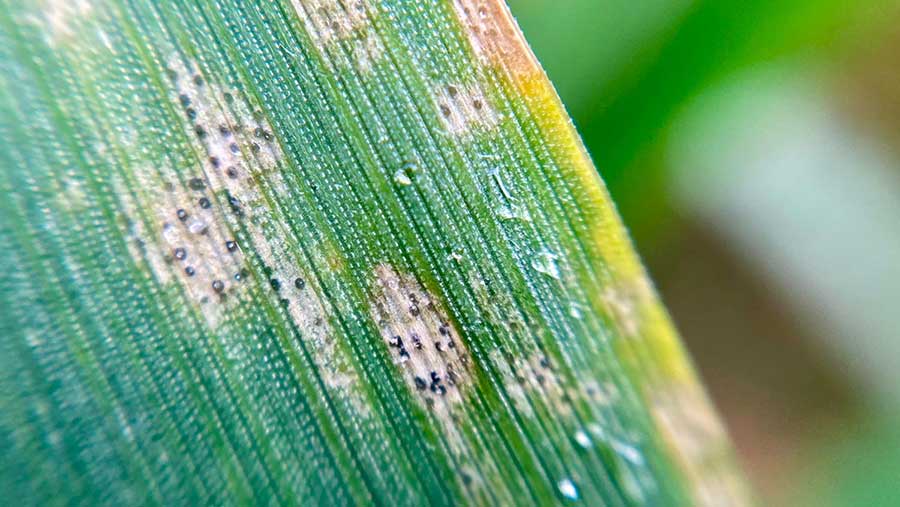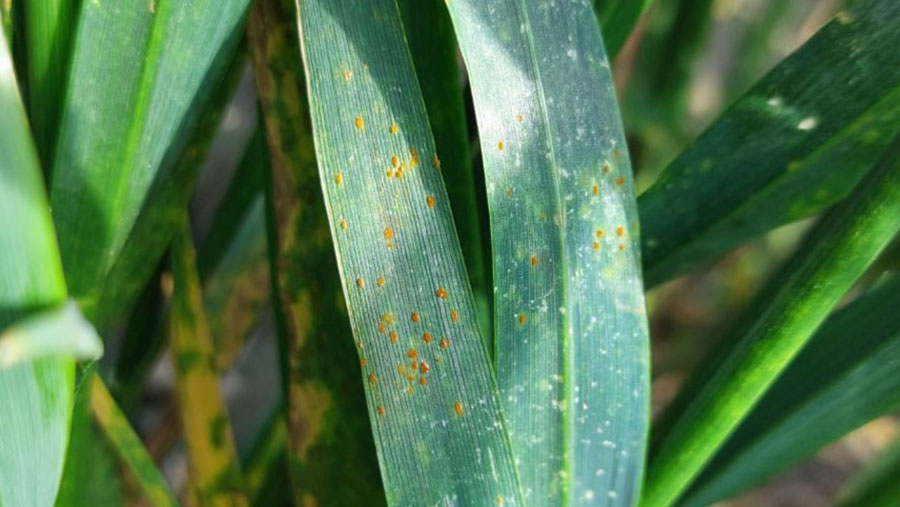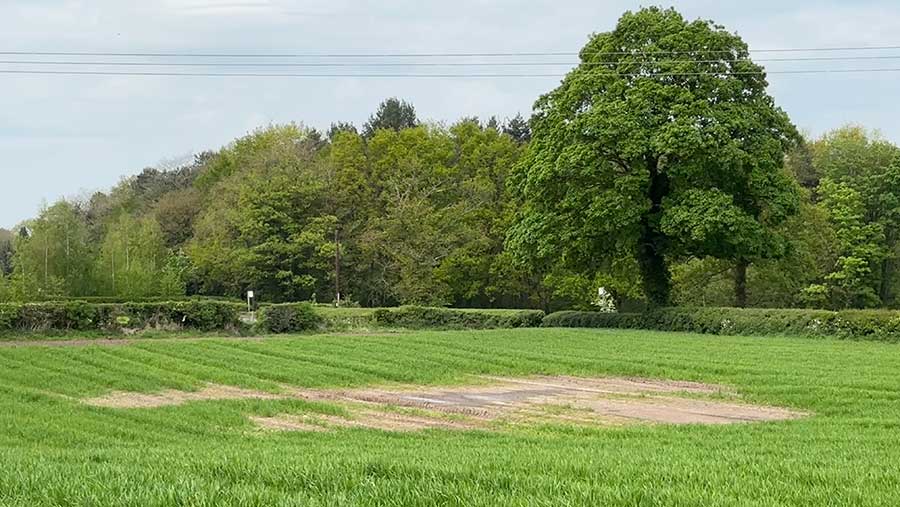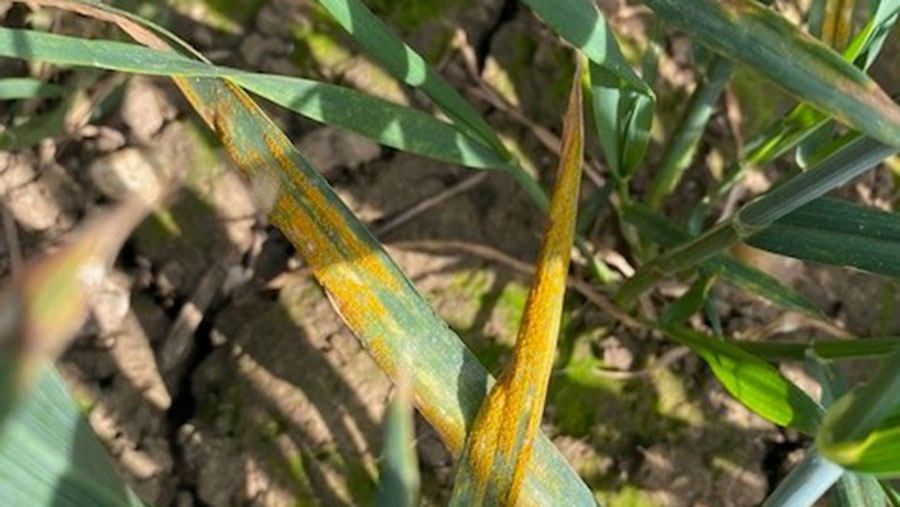Advertiser content
Protecting yield potential at T2 this challenging season
When it comes to 2024’s disease control, rain has caused a cascade of challenges. Back in the autumn, saturated soils meant drilling dates went awry, and this spring we’ve seen many missed T0s and compromised T1s.
Yet the threat of disease is mounting, and the need to protect yields and manage resistance risk is ever-present.
As Rebecca Joynt, Senior Consultant in Crop Pathology at ADAS, explains, this is a season to keep a very close eye on crops.
Drilling date, disease pressure and crop health
“The wet autumn created a divide in terms of crop drilling dates,” she notes.

Rebecca Joynt © BASF
“Some went in early, before the wet weather arrived, and these crops look very different to those that were sown very late, during those slightly drier windows towards the end of winter.”
“We know early drilling is a risk factor for septoria but the mild humid conditions have heightened this risk.”
Met Office anomaly maps show the UK had warmer than average temperatures throughout autumn, winter and into spring 2024.
Provisionally, the organisation says 2023 had the second warmest Central England temperature since the series began in 1659.

Septoria © BASF
“The mild weather, particularly through the back end of the winter and into spring has influenced other foliar diseases.
We’ve been receiving reports of brown rust since mid-April in the east and south, which is exceptionally early.
“It’s also presented yellow rust with favourable conditions,” Rebecca continues.
“Later drilling has been known to be associated with yellow rust risk, and it looks like those crops which were sown towards the end of the season, especially susceptible varieties are facing higher than average pressure.
As you may expect in a season with such high pressure, there are anomalies.
Rebecca is keeping a watchful eye on reports from farmers and agronomists of infections in varieties usually renowned for their high resistance scores.
“This is particularly notable for the rusts,” she says. “It’ll be interesting to see how the season pans out and whether the UK CPVS identifies any new strains.”
A regional perspective
Hugo Pryce, BASF Agronomy Specialist for the east of England, agrees with Rebecca’s summary and describes how, in Norfolk, septoria is creeping up the canopy, yellow rust is quite easy to find and brown rust is also being picked up in susceptible varieties.

Brown rust in untreated Crusoe, Essex © BASF
“Winter crops have been a real struggle here, and there are a lot less in the ground. There are some good crops but they are typically the earlier drilled ones, where there was no significant grass weed pressure.”
Hugo highlighted that as temperatures continue to rise, disease pressure mounts. He describes how many growers are having to adjust fungicide programmes to compensate for the lack of T0s and variable crop growth.
Rebecca notes that, compounding the effects of high disease pressure, is the effect of the wet weather on overall plant health. It’s not just about the patches of lost crop due to waterlogging.
Where the crop survived, saturated soils may have discouraged plants from putting down deep roots, reducing their resilience to drought and other stressors. In second wheats this may have exaggerated the effects of take all.

© BASF
Effect on fungicide programmes
With the wet weather continuing well into spring, trying to manage the high pressure has been particularly difficult.
Best laid plans for T0s and T1s have, in many cases fallen apart at the seams, so T2s are often shouldering the burden.
“Where farmers have got crops that are not looking good and yields are going to be limited, there may be conversations about whether spend can be justified,” acknowledges Rebecca.
“Conversely, there’s also talk of investing in those crops that have the yield potential with the hope they can help balance the effects of those poorer crops.
“It’s a very individual decision and a whole range of factors will considered in that decision making.”
Hugo adds: “In both scenarios, keeping the top leaves clean is key to maximising yield potential and the T2 flag leaf application is critical to this.
It’s highly likely that growers may find they are in a curative situation, on leaf 2, and potentially leaf 3 – especially if T1 timings have been compromised and crops are carrying a reasonable amount of septoria.”
“Proven over several years in high-pressure disease situations, Revystar XE (Xemium and Revysol) is tried and trusted as a robust and reliable broad-spectrum fungicide for the control of septoria, yellow rust and brown rust.”
At the T2 timing, 1.0 l/ha Revystar XE delivers consistency with strong curative and protectant activity, which will be particularly important in this year’s variable crops where leaf emergence will not be uniform.
And, at a lower price point than last season, as well as being supported down to 100 l/ha water volume, and with no known incompatible tank mix partners, Revystar XE also delivers value and efficiency.”

Yellow rust in untreated Skyfall, Lincolnshire © BASF
For Rebecca, Revystar XE’s role in programmes is justified on two counts.
“AHDB fungicide performance curves show Revysol’s (Myresa) septoria control is comparable to Vimoy in both the protectant and yield data. In terms of rusts, Revystar XE also provides good control – Revysol (Myresa) is stronger than Inatreq (Peqtiga) on both yellow rust and brown rust.
“In short, Revystar XE offers good control across a range of diseases. The fact it’s main septoria activity is driven by an azole also means it offers an alternative mode of action (MOA) and contributes to resistance management too.”
Managing resistance
While the immediate concern will undoubtedly be protecting yield potential, resistance management remains an important element of fungicide programmes.
“Managing resistance is largely about using different MOA in sequences and in mixtures,” says Rebecca. “And this season growers have more choice than they’ve had for many.
There are now three different modes of action (SDHIs, azoles, QiIs) all with good activity against septoria, which means there’s more flexibility.
We’ve now got increased ability to adapt programmes according to how the season progresses and where crops are facing more than one pathogen.”
Hugo adds that “whilst MOA diversity is strongly welcomed and encouraged, it’s important to note that all new actives entering the market in recent years are largely partnered with prothioconazole, an azole with weak efficacy against septoria, putting additional resistance pressure on the actives.

Hugo Pryce, Agronomy Specialist, BASF © BASF
“Revysol is by far the strongest azole for septoria control and its inclusion in the programme will support actives at higher resistance risk.”
While multisites are particularly useful in reducing selection pressure, many are protectant and need to be applied to the target leaf before disease takes hold.
It’s one of the reasons Revystar XE is so highly valued – it contains the most effective azole and offers both protectant and curative activity.
“In short, it’s a very difficult season with high disease pressure.
“We’ve now got products available with three different modes of action to make use of and get applications on in good time, when you can,” advises Rebecca.
“There are a range of diseases out there, monitor crops closely so you can catch infections early and adapt your spray programme to control the diseases that are present – as well as the unrelenting pressure, this season seems to be throwing up a few challenges!”
Find out more about how Revystar XE can help protect your yield potential at T2 this challenging season here.
Provided by
BASF offers renowned and innovative fungicides, herbicides, insecticides and growth regulators for agriculture. Our products and services help farmers increase their yields and optimize the quality of their products.
